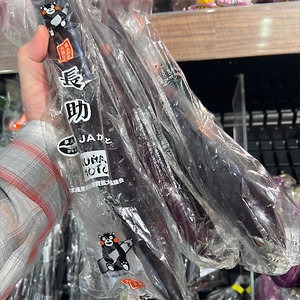


Onaga Eggplant
Estimated Inventory, lb : 0
Description/Taste
Onaga eggplants are a long varietal, averaging 35 to 60 centimeters in length, and have a uniform, slender, and cylindrical shape with slight tapering at each end. The eggplant’s skin is dark purple, firm, smooth, and glossy, and the stem ranges in color from dark purple, almost black, to purple-green. Underneath the surface, the flesh is pale yellow to ivory, sometimes tinged with green, and has a dense, spongy, and elastic consistency. The flesh also encases a few seeds, but the seeds are hardly noticeable when the eggplant is prepared. Onaga eggplants must be cooked before consumption and develop a soft and tender texture. The seeds have a slightly bitter flavor as they contain alkaloids similar to the bitter flavors of tobacco, but when cooked, the bitterness is reduced, creating a mild, sweet, and slightly sour taste.
Seasons/Availability
Onaga eggplants are available year-round, with a peak season in the summer through early fall.
Current Facts
Onaga eggplants, botanically classified as Solanum melongena, are an early-ripening variety belonging to the Solanaceae or nightshade family. The long and slender eggplants are a specialty cultivar of Japan favored for their mild, sweet flavor, pigmented appearance, and soft and tender nature. Onaga eggplants are also known as Onaga Nasu, Onaganasu, Shoya Onaga, Long eggplant, and Ocho eggplant, and the eggplants received their moniker for their elongated shape. The varietal is one of the longest eggplants grown in Japan and is marketed as a premium cultivar in Japanese markets. Onaga eggplants are less bitter than other purple eggplant varieties, but the eggplants should still be consumed before they are too mature to maintain their mild flavor.
Nutritional Value
Onaga eggplants are a good source of vitamin C to strengthen the immune system while reducing inflammation and fiber to regulate the digestive tract. The eggplants also provide potassium to balance fluid levels within the body, folate to promote the growth of red blood cells, manganese to develop connective tissue, and other amounts of B vitamins, phosphorus, copper, magnesium, and vitamin K.
Applications
Onaga eggplants must be cooked and develop a tender texture well suited for braising, deep-frying, simmering, stuffing, and stewing. The eggplants are commonly sliced and grilled to create a smokey flavor, or they are stewed with other vegetables as a hearty meatless dish. Onaga eggplants are also simmered into soups and curries, cooked in spicy miso, fried into tempura, or stir-fried with meat and vegetables. In Japan, Onaga eggplants are coated in miso and baked in a dish known as nasu dengaku, or they are fried with a mixture of miso, sugar, and onions. They are also pickled in dashi and stored for extended use. Onaga eggplants pair well with aromatics such as green onions, scallions, garlic, and ginger, honey, soy sauce, sesame oil, and miso, meats including pork, poultry, and beef, seafood, and produce such as squash, broccoli, and tomatoes. Whole, unwashed Onaga eggplants have a short shelf life and should be used immediately for the best quality and flavor. The eggplants will keep up to three days when wrapped in paper bags or paper towels and stored in the refrigerator.
Ethnic/Cultural Info
Onaga eggplants are cultivated in the Kumamoto Prefecture in Japan and are one of the traditional vegetables of the region. Within the Kumamoto Prefecture, Minami Ward is one of the largest Onaga eggplant-producing areas. Eggplant production in this region is steadily increasing even as eggplant production in Japan decreases. Kumamoto is an agricultural prefecture known for its diverse and rich cuisine, and many restaurants use fresh local vegetables as the main feature of their dishes. One of the most famous dishes from Kumamoto is dagojiru, also known as a type of nabe, shabu-shabu, or hot pot. The flavorful soup is made with a variety of Kumamoto-grown vegetables, including sweet potato, mushrooms, kabocha squash, lotus root, and eggplant, and the ingredients will vary depending on the season and availability.
Geography/History
Onaga eggplants are native to Japan and have been grown on Kyushu, the third-largest island of Japan, since the 1970s. Kumamoto, Fukuoka, and Nagasaki are the three main prefectures on Kyushu that cultivate Onaga eggplants, and the eggplants are marketed as a specialty variety that is not commonly found in markets. Today Onaga eggplants are sold through local markets in Kyushu and select grocers and distributors in other regions of Japan.
Recipe Ideas
Recipes that include Onaga Eggplant. One









